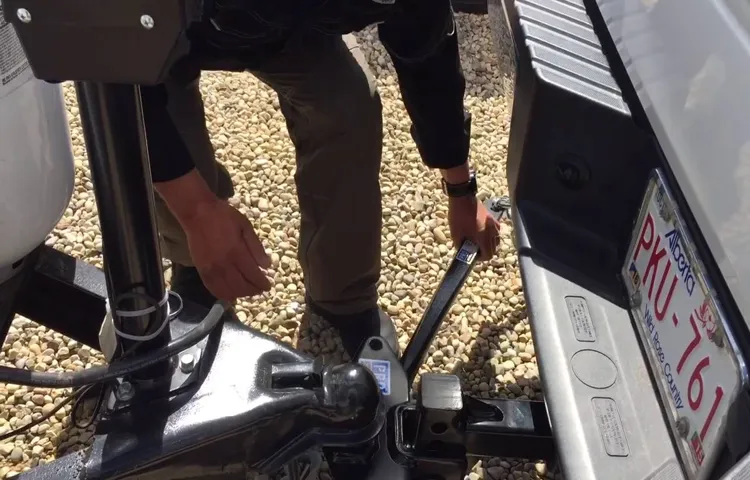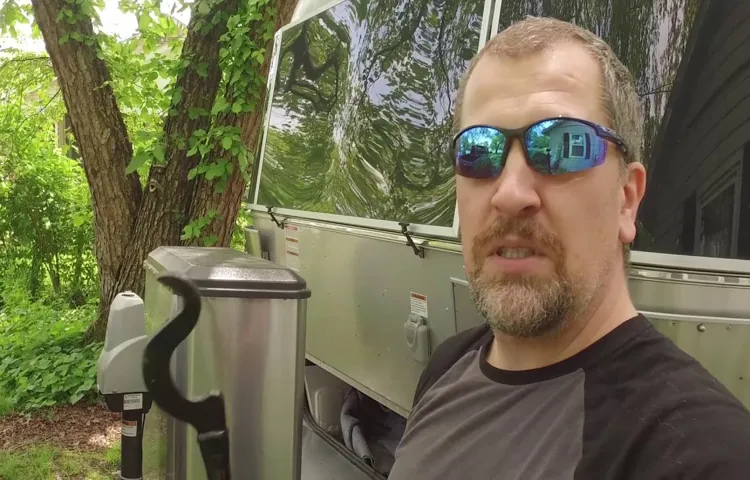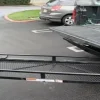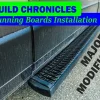So, you’ve finally got your hands on an equalizer hitch and you’re ready to tackle the task of hooking it up. But where do you start? How do you make sure you’re doing it right? Don’t worry, we’ve got you covered. In this blog post, we’ll walk you through the step-by-step process of hooking up an equalizer hitch to your trailer.
We’ll explain what an equalizer hitch is, why you need one, and how to properly install it. So, grab your tools and let’s get started!
Introduction
If you’re towing a trailer or carrying a heavy load, it’s essential to have the right equipment to ensure a safe and smooth journey. One important piece of equipment that can greatly improve your towing experience is an equalizer hitch. An equalizer hitch helps distribute the weight of your trailer or load evenly across your towing vehicle, reducing sway and improving stability while on the road.
So, how do you hook up an equalizer hitch? The process may seem a bit intimidating at first, but with the right guidance, it’s actually quite simple. First, make sure your vehicle is on level ground and attach the hitch to the receiver on your tow vehicle. Then, adjust the height of the hitch head to match the height of your trailer’s coupler.
Attach the spring bars to the hitch head and the brackets on your trailer frame. Finally, adjust the tension on the spring bars to ensure proper weight distribution. Following these steps will help you hook up your equalizer hitch correctly and ensure a safer and more enjoyable towing experience.
What is an Equalizer Hitch?
Equalizer hitch An equalizer hitch, also known as a weight-distribution hitch, is a device that helps distribute the weight of a trailer or caravan evenly across the towing vehicle and trailer axles. It is designed to improve stability and control while towing, making the overall towing experience safer and more comfortable. This type of hitch is particularly useful when towing large or heavy loads, as it helps to balance the weight and reduce the strain on the towing vehicle.
By evenly distributing the weight, it helps to eliminate the common problems associated with towing, such as swaying and bouncing. An equalizer hitch works by utilizing spring bars or torsion bars that connect the trailer tongue and the hitch receiver. These bars apply leverage to the trailer and the towing vehicle, allowing for a more balanced distribution of weight.
The end result is a smoother, more controlled towing experience, with increased stability and reduced sway. Whether you are towing a camper, a boat, or any other type of trailer, an equalizer hitch can greatly enhance the safety and performance of your towing setup.

Why Use an Equalizer Hitch?
equalizer hitch, towing stability, weight distribution, trailer sway, safety, towing experience
Step-by-Step Guide
So you’re ready to hit the road with your RV, but before you go, you want to make sure you have the right equipment to tow it safely. One essential piece of gear for towing a trailer is an equalizer hitch. This handy device helps distribute the weight evenly between your tow vehicle and the trailer, improving stability and control while you’re on the road.
But how do you hook it up? Don’t worry, I’ve got you covered. Here’s a step-by-step guide on how to hook up an equalizer hitch. First, make sure your tow vehicle and trailer are on level ground.
Then, back up your tow vehicle so that the trailer coupler is directly above the hitch ball. Lower the coupler onto the hitch ball and lock it in place. Next, tighten the coupler lock to ensure a secure connection.
Now it’s time to attach the weight distribution bars. These bars help distribute the weight of the trailer evenly on the towing vehicle’s axles. Slide the bars into the brackets on the trailer frame and secure them using the provided pins.
Finally, attach the sway control device if your hitch system includes one. This device helps prevent your trailer from swaying side to side while you’re driving. Attach it to the trailer frame and tighten the bolts or adjust as needed.
And there you have it! You’re ready to hit the road with your properly hooked up equalizer hitch. Safe travels!
Step 1: Park and Prepare
In this step-by-step guide, we’ll walk you through the first step of parking and preparing for your adventure. Finding a place to park your vehicle is crucial, especially if you’re heading out to a popular destination or going on a long hike. Before you start your journey, it’s important to research and plan ahead.
Look for designated parking areas near your destination and check for any fees or restrictions. You don’t want to drive all the way there only to find out that there’s no parking available or that you can’t leave your car overnight. Once you’ve found a suitable parking spot, be sure to follow any rules or regulations to avoid fines or towed vehicles.
It’s also a good idea to prepare your vehicle for the trip. Check your tire pressure, fill up your gas tank, and make sure your vehicle is in good working condition. Bring any necessary supplies, such as maps, a first aid kit, and water.
By taking the time to park and prepare properly, you’ll set yourself up for a smooth and enjoyable adventure. So, get ready to hit the road and make some wonderful memories!
Step 2: Attach the Receiver Hitch
receiver hitch Attaching a receiver hitch to your vehicle is an essential step if you want to tow trailers, RVs, or other heavy loads. The receiver hitch serves as the connection point between your vehicle and the trailer, ensuring a secure and stable towing experience. Here is a step-by-step guide on how to attach a receiver hitch to your vehicle.
First, gather all the necessary tools and materials for the installation. This typically includes a wrench, socket set, and torque wrench to tighten the bolts securely. Next, locate the mounting points on your vehicle where the receiver hitch will be attached.
They are usually located underneath the rear of the vehicle, near the bumper. Once you have identified the mounting points, position the receiver hitch onto the vehicle. Make sure it is aligned correctly and fits snugly against the frame of the vehicle.
Using the wrench and socket set, begin tightening the bolts and nuts that secure the receiver hitch to the vehicle. Start with the bolts in the middle and work your way outwards, alternating between the bolts on each side. This will help distribute the pressure evenly and ensure a secure attachment.
As you tighten the bolts, periodically check the alignment of the receiver hitch to make sure it remains straight and level with the ground. Adjust if necessary before fully tightening the bolts. Once all the bolts are tightened, use the torque wrench to ensure that they are properly torqued.
Refer to the manufacturer’s instructions for the recommended torque specifications for your specific receiver hitch. Finally, give the receiver hitch a firm shake to check for any excessive movement or looseness. If you notice any issues, double-check the bolts for proper tightness and alignment.
Step 3: Mount the Equalizer Hitch
equalizer hitch, mounting the equalizer hitch, weight distribution hitch, towing safety, towing equipment So, you’ve gathered all the necessary tools, read the instructions, and now it’s time for the next step in mounting the equalizer hitch – actually getting it installed! Mounting the equalizer hitch is an essential part of ensuring proper weight distribution and towing safety. This handy piece of equipment helps to distribute the weight evenly between the tow vehicle and the trailer, minimizing sway and providing a smoother, more controlled towing experience. To start, position the equalizer hitch head on the trailer hitch receiver.
Make sure the hitch head is aligned with the center of the vehicle and the trailer. Insert the hitch head into the receiver and secure it with the provided pins or bolts. Double-check that the hitch head is securely fastened and properly seated.
Next, attach the spring bars to the hitch head. These bars play a crucial role in the weight distribution process. They connect the hitch head to the trailer and help transfer some of the trailer’s weight to the front axle of the tow vehicle, improving steering and braking capabilities.
Attach the spring bars to the hitch head using the provided hardware and ensure they are properly aligned and seated. Now, it’s time to connect the spring bars to the trailer frame. This step requires precision and attention to detail.
Measure the distance between the hitch head and the trailer frame and make sure it is equal on both sides. Attach the spring bars to the trailer frame using the appropriate brackets or chains. Tighten all bolts and nuts to the recommended torque to ensure a secure connection.
Finally, adjust the tension on the spring bars. This can be done using the integrated jacks or a wrench, depending on the type of equalizer hitch you have. The goal is to achieve the optimal amount of tension to evenly distribute the weight between the tow vehicle and the trailer.
Step 4: Connect the Sway Control
trailer sway control
Step 5: Adjust the Weight Distribution
weight distribution, adjust weight distribution, step-by-step guide
Tips and Safety Precautions
As a responsible driver, it’s important to know how to safely hook up an equalizer hitch. First, ensure that your trailer and vehicle are level before connecting the hitch. This will help distribute the weight evenly and prevent any potential sway while driving.
Next, attach the hitch head to the receiver on your vehicle, making sure it is latched securely. Then, lower the trailer onto the hitch ball and lock it into place. Make sure the trailer is properly aligned with the hitch, and double-check that the hitch ball is securely fastened.
Finally, attach the weight distribution bars to the hitch head and adjust them as necessary to level the trailer. Remember to always follow the manufacturer’s instructions for your specific hitch, as different models may have slightly different setups. By taking these precautions and double-checking your setup, you can ensure a safer and more stable towing experience.
So the next time you hit the road with a trailer in tow, you can do so with confidence and peace of mind, knowing that your equalizer hitch is properly hooked up.
Tip 1: Properly Measure and Distribute Weight
When it comes to loading up your vehicle, it’s important to properly measure and distribute the weight. This is especially crucial if you’re carrying heavy items or equipment that could significantly impact the balance and stability of your vehicle. One tip is to evenly distribute the weight across the front and rear of the vehicle.
This can help to prevent any undue strain on either end and ensure that the vehicle remains balanced during travel. Additionally, it’s important to secure the items properly to prevent them from shifting or moving while on the road. This will not only help to maintain the stability of the vehicle but also ensure the safety of yourself and other road users.
By following these tips and taking the time to properly measure and distribute the weight, you can avoid any potential accidents or damage to your vehicle. So the next time you’re loading up your vehicle, make sure to give some thought to how you’re distributing the weight.
Tip 2: Check for Secure Connections
When browsing the internet, it’s important to always check for secure connections. These connections, indicated by a padlock symbol or “https” in the website URL, ensure that your data is encrypted and protected from hackers. Secure connections prevent your personal information, such as passwords and credit card details, from falling into the wrong hands.
So, before entering any sensitive information on a website, make sure to double-check that the connection is secure. It’s a simple yet crucial precaution that can save you from becoming a victim of cybercrime. Think of it like locking your front door before leaving your house – it’s a small action that can go a long way in keeping you safe.
So, next time you’re online, take a moment to check for that little padlock symbol and keep your personal information secure.
Tip 3: Practice with Maneuvering and Turning
When it comes to riding a motorcycle, maneuvering and turning are two skills that every rider must master. Practicing these maneuvers not only improves your overall riding ability but also enhances your safety on the road. One important tip for maneuvering is to always look where you want to go.
This means turning your head and scanning the road ahead, rather than fixating on the obstacles or the ground directly in front of you. By doing so, you will be able to anticipate turns or obstacles and adjust your speed and line accordingly. Another important tip is to use your body to assist with turning.
By leaning your body in the direction of the turn, you shift your weight and help the bike lean into the corner. This allows for smoother and more controlled turns. However, it is crucial to practice these maneuvers in a safe environment, such as an empty parking lot, and gradually increase your speed and complexity as your skills improve.
Remember, the more you practice, the better you will become at maneuvering and turning on your motorcycle. So get out there, ride safe, and enjoy the thrill of the open road!
Safety Precaution 1: Follow Manufacturer’s Instructions
fire safety precautions
Safety Precaution 2: Observe Weight Limits
weight limits, safety precautions, observe weight limits, Tips, safety precautions In order to ensure your safety while using any type of equipment or structure, it is important to observe the weight limits set by the manufacturer. These weight limits are put in place for a reason – to prevent accidents and keep you and others safe. So, before jumping on that trampoline, swinging on that hammock, or stepping onto that ladder, take a moment to check the weight limit.
It may seem like a small detail, but it can make a big difference in preventing injuries or even catastrophic failures. Think of it like this: if you were to place a heavy load on a weak branch, it would likely snap under the pressure, right? The same concept applies to equipment and structures. By observing weight limits, you’re not only protecting yourself, but also prolonging the lifespan of the equipment.
So, next time you’re ready to have some fun or get to work, make sure to do a quick weight limit check. Better safe than sorry, right?
Conclusion
And there you have it, folks! The perfectly polished guide on how to master the art of hooking up an equalizer hitch. You’re now armed with the knowledge to ensure your towing adventures are smoother than butter on a hot biscuit. With a dash of precision and a pinch of know-how, you’ll be the envy of all your friends at the campsite.
So go forth, fellow explorers, and conquer the open road like a swashbuckling hitching hero! Just remember, while others may be left scratching their heads in confusion, you’ll be proudly proclaiming, “Equalizer hitch, I conquer thee!” Happy towing!”
Enjoy a Smooth and Safe Towing Experience with an Equalizer Hitch
equalizer hitch, towing experience, tips, safety precautions
FAQs
What is an equalizer hitch and why is it important when towing a trailer?
An equalizer hitch is a device that helps distribute the weight of a trailer evenly across the tow vehicle and trailer axles. It is important because it improves towing stability, reduces trailer sway, and provides better control and handling.
How do I hook up an equalizer hitch to my tow vehicle and trailer?
To hook up an equalizer hitch, first, back your tow vehicle up to the trailer’s coupler. Lower the coupler onto the hitch ball, making sure it is secure. Then, attach the spring bars to the hitch head and trailer frame using the necessary hardware. Finally, adjust the tension on the spring bars to achieve the desired weight distribution.
How do I properly adjust the tension on the spring bars of an equalizer hitch?
To properly adjust the tension on the spring bars, you need to measure the height of your tow vehicle’s front and rear fenders before and after coupling the trailer. Use the built-in adjustment mechanisms or swap out the spring bars to achieve a level ride, with the front and rear fenders returning to their unloaded heights.
Can I install an equalizer hitch on any type of tow vehicle and trailer?
Yes, you can install an equalizer hitch on most tow vehicles and trailers, regardless of their size or weight. However, it is essential to ensure that the hitch is compatible with your specific setup and rated for the combined weight of your tow vehicle and trailer.
How much weight can an equalizer hitch distribute?
The weight distribution capacity of an equalizer hitch varies depending on the model and brand. It can range from a few hundred pounds to several thousand pounds. It is crucial to choose an equalizer hitch that matches the total weight of your trailer and the tongue weight.
Can an equalizer hitch eliminate trailer sway completely?
While an equalizer hitch significantly reduces trailer sway, it may not eliminate it entirely. Other factors like road conditions, wind gusts, and load distribution within the trailer can still affect stability. However, using an equalizer hitch minimizes the likelihood and severity of trailer sway.
Are there any maintenance or safety checks I need to perform regularly on an equalizer hitch?
Yes, regular maintenance and safety checks are essential for the optimal performance of an equalizer hitch. This includes inspecting the hitch components, lubricating moving parts, checking for any signs of wear or damage, and ensuring the hitch is securely attached before each towing trip.



